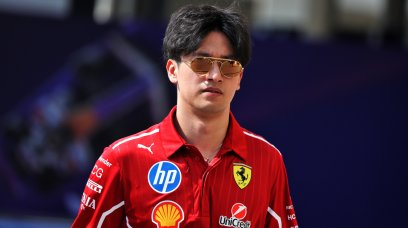In 2019, Formula 1 announced plans to be Net-Zero Carbon by 2030 as part of its wider Sustainability Strategy. Three years in, the sport has issued an update on how much progress has already been made, as well as further promoting the mission publicly. As part of the aim, F1 stated that the whole sport would have a net-zero carbon footprint by 2030, covering the cars and on-track activity as well as the rest of the operations. Another aspect of the Sustainability Strategy was for F1 to develop a 100 per cent sustainable fuel, to be used in the cars by 2026. Formula 1 has now revealed the steps that have already been taken to reduce the sport's carbon footprint since these plans were announced, with a press release confirming: In the past three years, F1 has introduced remote broadcast operations, which has enabled the sport to reduce freight Redesigned freight containers that enable more efficient aircraft to be used Transitioned to 100 per cent renewable energy in F1 offices Delivered first carbon neutral broadcast production at Silverstone in 2021 and aim to earn this accreditation again in 2022 while applying the lessons learned to further race Achieved the highest Sustainability Management accreditation awarded by the FIA (3* accredited) Issued guidance to all Race Promoters to help assist them in best practice when running a sustainable event looking at key areas such as energy, plastic and waste, wellbeing and nature and local fan travel
Further actions to come
As well as the progress that has already been made, F1 has also outlined what they will be doing going forwards. This includes: Taking action to regionalise the calendar which will help improve freight and travel logistics – this will be an ongoing process in the years to come to ensure that F1 is travelling efficiently as a World Championship Exploring carbon reduction measures for fans travelling to Formula 1 events Working with F2 and F3 to trial sustainable fuels with their ability to test solutions at pace Sharing the carbon reduction activities from across sporting community to ensure that everyone understands how the wider sport is coming together to set and achieve Net Zero goals Continuing to switch to more efficient logistics and travel arrangements from air, sea, and land Continuing to review processes as the standards for carbon reductions evolve at pace to ensure that F1 is at the forefront of this key area Additionally, F1's mission will become even more visible from the British Grand Prix onwards, with new branding set to appear across the paddock and pit lane areas at all races to help raise the profile of the sport's commitments.
Insight from Dieter Rencken
That Formula 1 faces existential challenges is clear: as the automotive world inexorably moves towards electrification, the pinnacle of motorsport remains committed to the internal combustion engine, albeit complemented by complex hybrid systems. Currently, these contribute around 15 per cent of overall power (160bhp of around 1000bhp); from 2026 the split is expected to be 50/50 for the same output. Already European governments are working to total bans on IC engines by 2035; other regions are expected to follow suit or impose stringent taxes on fossil-fuelled cars. On the surface, such bans or legislation could spell the death of ICE-powered F1 and/or see the premier category overshadowed by Formula E. There is, though, an alternate future for F1 as it squares up to reality: acting as a laboratory for zero-carbon fuel substitutes by working in conjunction with the Formula One Fuel Advisory Panel - comprising all major oil companies, not only existing team partners - to develop so-called 'drop-in' fuels capable of powering the two billion IC engines currently in operation on the world's roads with no (or few) modifications. Consider the doomsday alternative: where would billions of scrapped cars be dumped were they outlawed at the stroke of a politician's pen? Large swathes of the world don't have the necessary infrastructures to support a global switch to electrification and certain applications, such as trucking and aviation, are unsuited to battery power. Plus, liquids are easier to transport to and in many parts of the world than electricity. Thus, the ICE is here to stay for the foreseeable future, with the oil industry's major challenge being to ensure that existing and future engines operate cleanly and economically via 'drop-in' sustainable fuels that are available in sufficient quantities on a global basis at responsible pricing levels. As revealed here , F2 and F3 plan to switch to "an over 50% biofuel" for 2023. To double that objective for F1 by 2026 is no easy task, but here F1 and FOFAP face various options, all of which are extremely relevant in the wider world: bio and/or synthetic fuels or even carbon 'scraping' – whereby carbon is removed from the atmosphere and converted. F1 innovative spirit means the sport is best placed to act not only as mobile laboratory but as a highly visible and responsible global marketing platform. These sustainable fuels would also be used in aircraft that fly its cars and kit across the globe, further reducing the sport's carbon footprint. F1 engineers thrive on converting challenges into opportunities, and this one could be their best opportunity yet.
0miKCPpShbM
Most read







